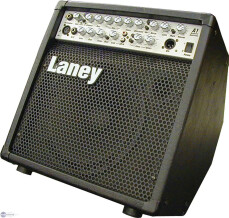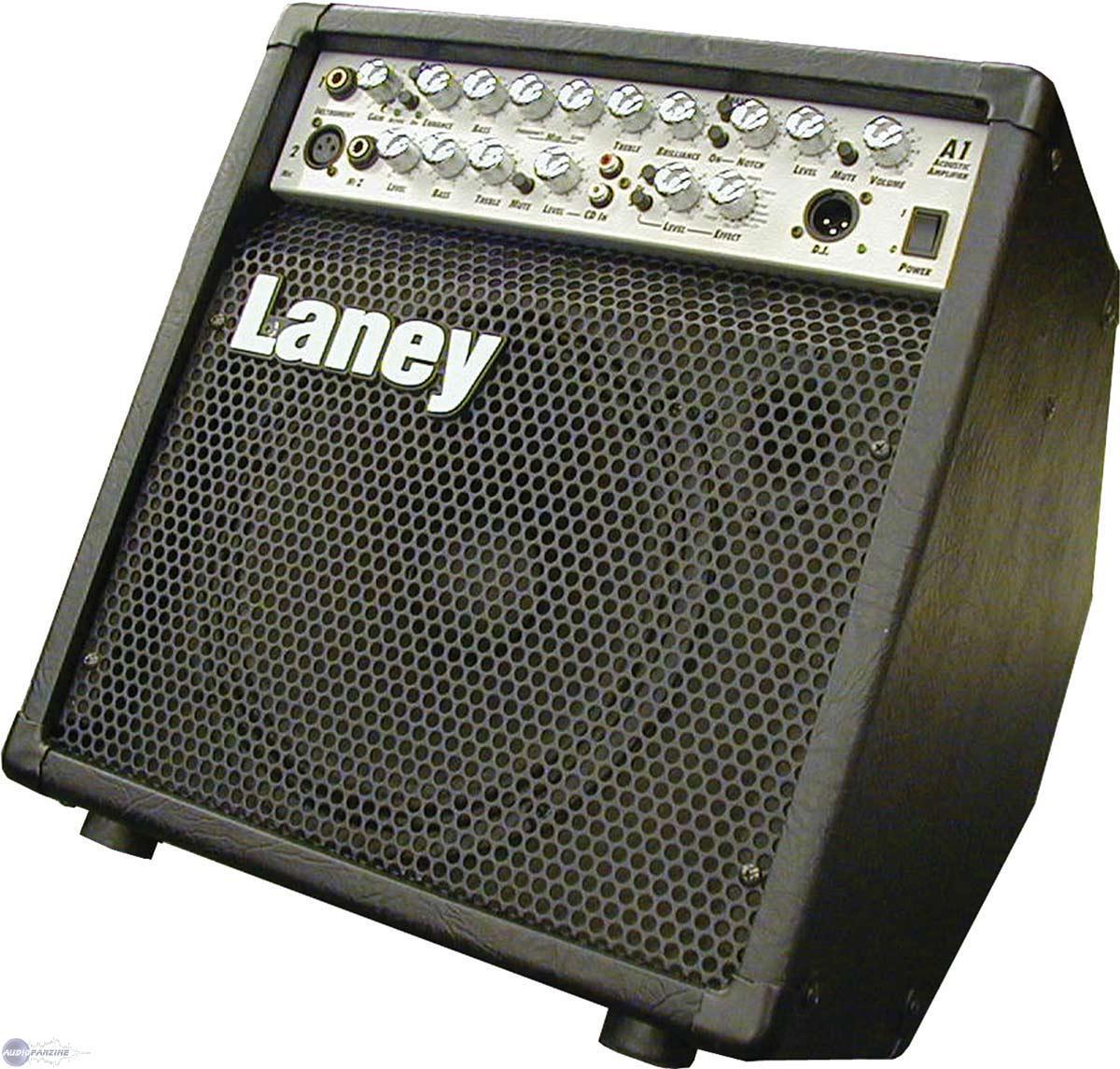View other reviews for this product:
Published on 10/31/09 at 12:51
Transistor amp sound
Announced power: 65 watts (I tested it without sound in a space of about 100 m2 closed my voice and guitar face another amplified guitar and a baritone sax: no power problem)
Effects: Many. strong point: one can affect the effects on channel 1 or channel 2 or both through a switch.
Another advantage: you can mute each input through a switch (convenient to tune on stage without risking getting feedback)
Connectivity:
Inputs: a jack for acoustic guitar, another jack but high impedance for electric guitar or bass shared with XLR microphone voice for example (you can connect the 2 together, one does not negate the another, but aq is the same for both inputs) and finally an RCA input for any stereo device (example: ipod, cd player etc.)
Outputs: one output tuner (practice) that can also serve double outlet to plug into a sampler, recorder), an outlet to plug into a PA (mono XLR) and finally a headphone output (useful to play on mute or settle silently on stage)
The HP is 10 inches (Celestion) with a tweeter for the treble: the advantage of the HP 10 is that it gives scope to the serious (compared to 8 or 6 inches from other acoustic amps I tested (EAR, Marshall)
Another strong point is not too big and can get in "tiltback" as a stage monitor: the sound is spread much better than flat.
Covered with carpet type materials such as bass amp.
Warning: The above is the amp is aerated lets see the circuit inside a grid: cover on rainy days or buy a cache of amp (an English manufacturer of custom made models for all brands of vinyl amp, searching the net or on ebay)
UTILIZATION
Setup is very simple: with its perfect acoustics all settings neutral. We can then develop with the many settings offered. Its beautiful and full of hand. Light color very flattering (typed his "studio" as a disk)
The manual is very brief and largely sufficient
However, two criticisms:
The first concerns the microphone channel that I use for voice on stage: there is no phantom power, so that competitors have all but most importantly, we can not have a voice used by cutting almost totally serious acute and pushing. I have already spoken on the forum, but I even failed to return the amp when I received this as his seemed to have a defect (drowned her in a halo of low / mid karaoke set incorrectly and never used to use a serious stage. I ended up cutting the bass and treble at max and I finally got through, but it leaves no room for adjustment for voice. Too bad.
Another small flaw: it blows a little compared to the EAR to my partner guitarist but nothing rhédibitoire
OVERALL OPINION
(I have answered all these questions above)
With experience, I do it again this election, or possibly the Marshall AS100 given the multi-use instruments that I am (EAR perfect acoustics and voice but you can not plug a bass or a keyboard and has no RCA inputs)
Announced power: 65 watts (I tested it without sound in a space of about 100 m2 closed my voice and guitar face another amplified guitar and a baritone sax: no power problem)
Effects: Many. strong point: one can affect the effects on channel 1 or channel 2 or both through a switch.
Another advantage: you can mute each input through a switch (convenient to tune on stage without risking getting feedback)
Connectivity:
Inputs: a jack for acoustic guitar, another jack but high impedance for electric guitar or bass shared with XLR microphone voice for example (you can connect the 2 together, one does not negate the another, but aq is the same for both inputs) and finally an RCA input for any stereo device (example: ipod, cd player etc.)
Outputs: one output tuner (practice) that can also serve double outlet to plug into a sampler, recorder), an outlet to plug into a PA (mono XLR) and finally a headphone output (useful to play on mute or settle silently on stage)
The HP is 10 inches (Celestion) with a tweeter for the treble: the advantage of the HP 10 is that it gives scope to the serious (compared to 8 or 6 inches from other acoustic amps I tested (EAR, Marshall)
Another strong point is not too big and can get in "tiltback" as a stage monitor: the sound is spread much better than flat.
Covered with carpet type materials such as bass amp.
Warning: The above is the amp is aerated lets see the circuit inside a grid: cover on rainy days or buy a cache of amp (an English manufacturer of custom made models for all brands of vinyl amp, searching the net or on ebay)
UTILIZATION
Setup is very simple: with its perfect acoustics all settings neutral. We can then develop with the many settings offered. Its beautiful and full of hand. Light color very flattering (typed his "studio" as a disk)
The manual is very brief and largely sufficient
However, two criticisms:
The first concerns the microphone channel that I use for voice on stage: there is no phantom power, so that competitors have all but most importantly, we can not have a voice used by cutting almost totally serious acute and pushing. I have already spoken on the forum, but I even failed to return the amp when I received this as his seemed to have a defect (drowned her in a halo of low / mid karaoke set incorrectly and never used to use a serious stage. I ended up cutting the bass and treble at max and I finally got through, but it leaves no room for adjustment for voice. Too bad.
Another small flaw: it blows a little compared to the EAR to my partner guitarist but nothing rhédibitoire
OVERALL OPINION
(I have answered all these questions above)
With experience, I do it again this election, or possibly the Marshall AS100 given the multi-use instruments that I am (EAR perfect acoustics and voice but you can not plug a bass or a keyboard and has no RCA inputs)



